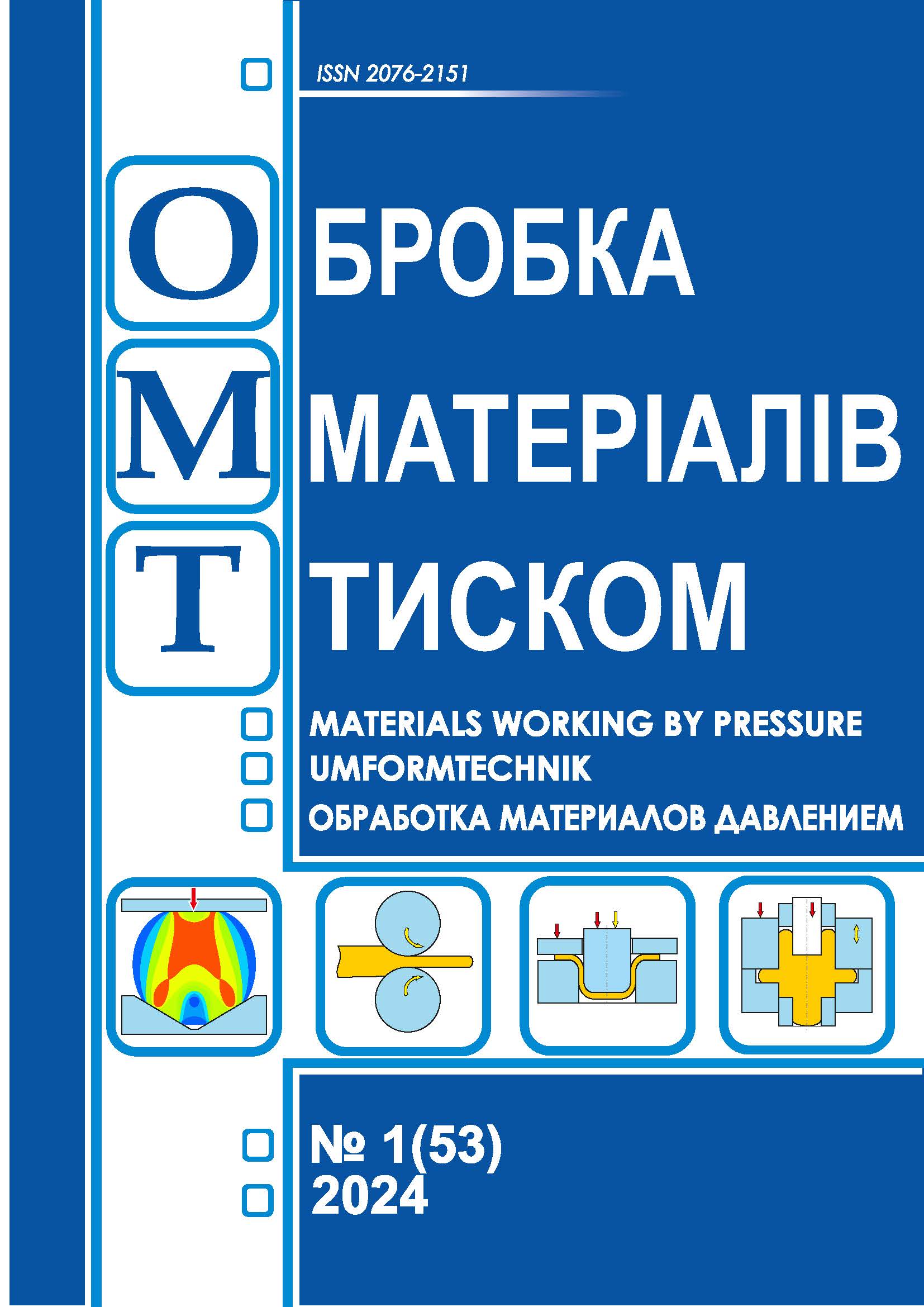Influence of the cone punch angle on the flanging of holes in a profiled sheet billet
DOI:
https://doi.org/10.37142/2076-2151/2024-1(53)67Keywords:
profiled billet, flanging, finite element method, forces, stresses, deformations, flange shape and dimensions.Abstract
Kaliuzhnyi O., Kaliuzhnyi V., Chuchin O.
Influence of the cone punch angle on the flanging of holes in a profiled sheet billet
In this article, the influence of the cone punch angle on the processes of axisymmetric flanging of holes in a profiled aluminum sheet billet AL-3003 COLD was studied using the finite element method and DEFORM software. The profiled billet was obtained by forming a hole by extrusion with punching of a bridge and has a maximum thickness near the hole with a subsequent linear decrease in thickness to the original one at the radius of the die. The use of a profiled billet results in a flange with a constant wall thickness along the length equal to the thickness of the original billet. An elastic-plastic model of metal was used for modeling. The dependence of the forces of flanging and punching on their displacement was determined. A punch with an angle at the top of the cone of 40o provides the minimum flanging force. For such a punch, the distributions of stress components in the deformed workpiece at the maximum flanging force and the distributions of the final deformation components in the flange are determined. The shape and dimensions of the flange after flanging and punch removal are shown. Based on the modeling data, a stamp with a set of tools for conducting experimental studies on the manufacture of a profiled billet and flanging was designed and manufactured. The experimental results showed good agreement with the modeling data in terms of extrusion forces, flanging and flange dimensions. At the same time, the flange has an advantage in strength due to the improvement of the macrostructure when the hole is formed by extrusion. The possibility of a significant increase in the height of the cylindrical part was obtained due to the subsequent implementation of stretching with thinning.

